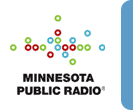 |

 |
  American RadioWorks American RadioWorks
American RadioWorks is public radio's largest documentary production unit. It creates radio and online documentaries and investigative reports on issues of national and international interest.
|




 |
Have ideas on how to use the news and other featured content on Sound Learning? What services and features would you like Sound Learning to provide?
Tell us how you use this site, what you like and dislike about it, what else you'd like to see here-anything. Help us help you.
Send us your comments or ideas for using and improving Sound Learning.
Sign up for our
monthly newsletter (September–May) >>
|

|  |

Student Exercises
- Students read, view, and listen to reports on various topics as part of a unit of study, as research for their own writings, for issue analysis activities, or for reading and listening instruction and practice. Many of the online documentaries include multiple stories (audio and text), photos, bibliographies, and Web links, allowing students to have a rich, multimedia experience with a topic.
- Students use the documentaries from American RadioWorks, or special reports from MPR News as models for their own multimedia reports. Students analyze both the content and format of the MPR documentaries as they research their own content and design their own reports.
Tips and Techniques
- To find online documentaries, see the special reports archive of the MPR News site or American RadioWorks. Then, browse through the topics or search for particular topics related to a current unit of study.
- Register to receive regular notification of upcoming American RadioWorks documentaries and MPR News specials.
- When there are both audio and text versions of a report, provide students with a print copy to read and take notes on as they listen to the audio.
- Remember to have students cite sources for information or quotations they use in reports, multimedia documents, or other educational projects, including photos and audio clips. Students should include the following information in their citation: document title or description, date of publication or when they found it on the Web, an address (URL), and, if possible, the author, photographer, or artist.
|  |

